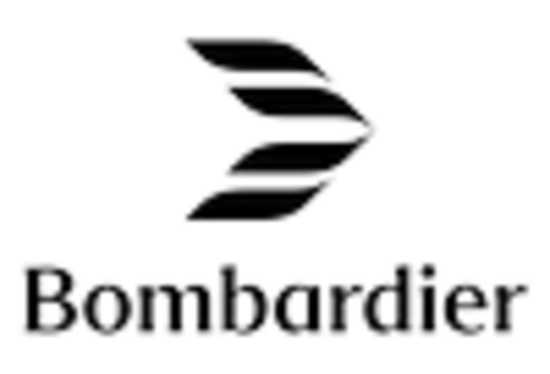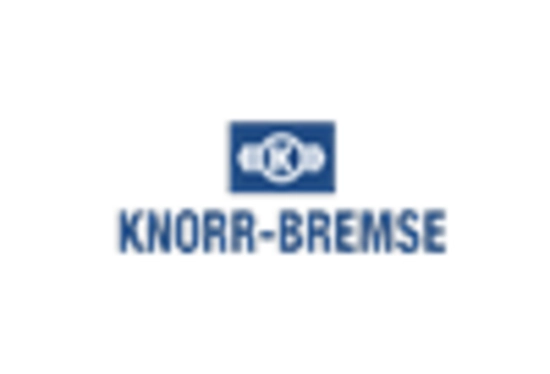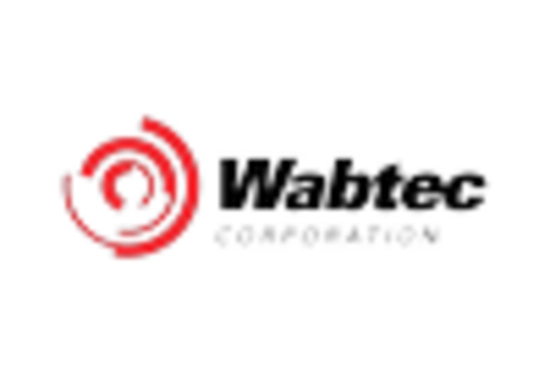Regulatory Compliance and Standards
The Railway AC System Market is significantly influenced by stringent regulatory frameworks aimed at enhancing safety and environmental standards. Governments and regulatory bodies are increasingly mandating compliance with specific guidelines regarding emissions and energy efficiency. For instance, regulations may require railway operators to adopt AC systems that meet certain energy performance criteria. This compliance not only ensures the safety of passengers but also promotes environmental sustainability. As a result, manufacturers are compelled to innovate and develop AC systems that align with these regulations. The ongoing evolution of standards is likely to drive investment in advanced technologies, thereby shaping the future landscape of the Railway AC System Market.
Increasing Demand for Energy Efficiency
The Railway AC System Market is experiencing a notable shift towards energy-efficient solutions. As energy costs continue to rise, railway operators are increasingly seeking systems that minimize energy consumption while maintaining optimal performance. This trend is driven by regulatory pressures and the need for cost-effective operations. According to recent data, energy-efficient AC systems can reduce energy consumption by up to 30%, which is a compelling incentive for railway companies. Furthermore, the integration of advanced technologies such as variable refrigerant flow and smart controls enhances the overall efficiency of these systems. Consequently, the demand for energy-efficient railway AC systems is expected to grow, reflecting a broader commitment to sustainability within the Railway AC System Market.
Technological Innovations in AC Systems
The Railway AC System Market is undergoing a transformation driven by technological innovations. Advances in HVAC technology, such as the development of smart AC systems equipped with IoT capabilities, are enhancing the functionality and efficiency of railway air conditioning. These innovations allow for real-time monitoring and predictive maintenance, which can significantly reduce downtime and operational costs. Furthermore, the integration of renewable energy sources, such as solar panels, into AC systems is becoming more prevalent. This shift not only improves energy efficiency but also aligns with the sustainability goals of many railway operators. As these technologies continue to evolve, they are likely to reshape the Railway AC System Market, fostering a more competitive landscape.
Rising Passenger Expectations for Comfort
The Railway AC System Market is increasingly shaped by rising passenger expectations for comfort and convenience. As travel becomes more competitive, railway operators are focusing on enhancing the passenger experience, which includes providing effective climate control within trains. Surveys indicate that a significant percentage of passengers prioritize comfort features, including temperature regulation, when choosing their mode of transport. This trend is prompting railway companies to invest in advanced AC systems that offer improved air quality and temperature control. Additionally, the emphasis on passenger-centric designs is likely to drive innovation in the Railway AC System Market, as manufacturers strive to meet these evolving expectations.
Growth in Urbanization and Rail Infrastructure
The Railway AC System Market is poised for growth due to the rapid urbanization and expansion of rail infrastructure. As urban populations increase, there is a corresponding rise in the demand for efficient public transportation systems, including railways. This trend is particularly evident in developing regions, where investments in rail infrastructure are surging. According to recent statistics, the railway sector is projected to witness a compound annual growth rate of over 5% in the coming years, driven by urbanization. Consequently, the demand for advanced AC systems that provide comfort and reliability in urban rail services is expected to rise, further propelling the Railway AC System Market.


















Leave a Comment